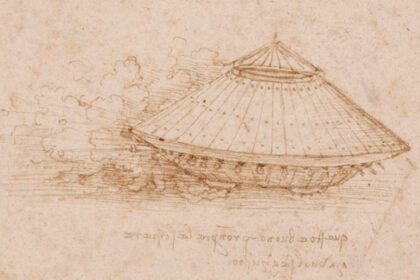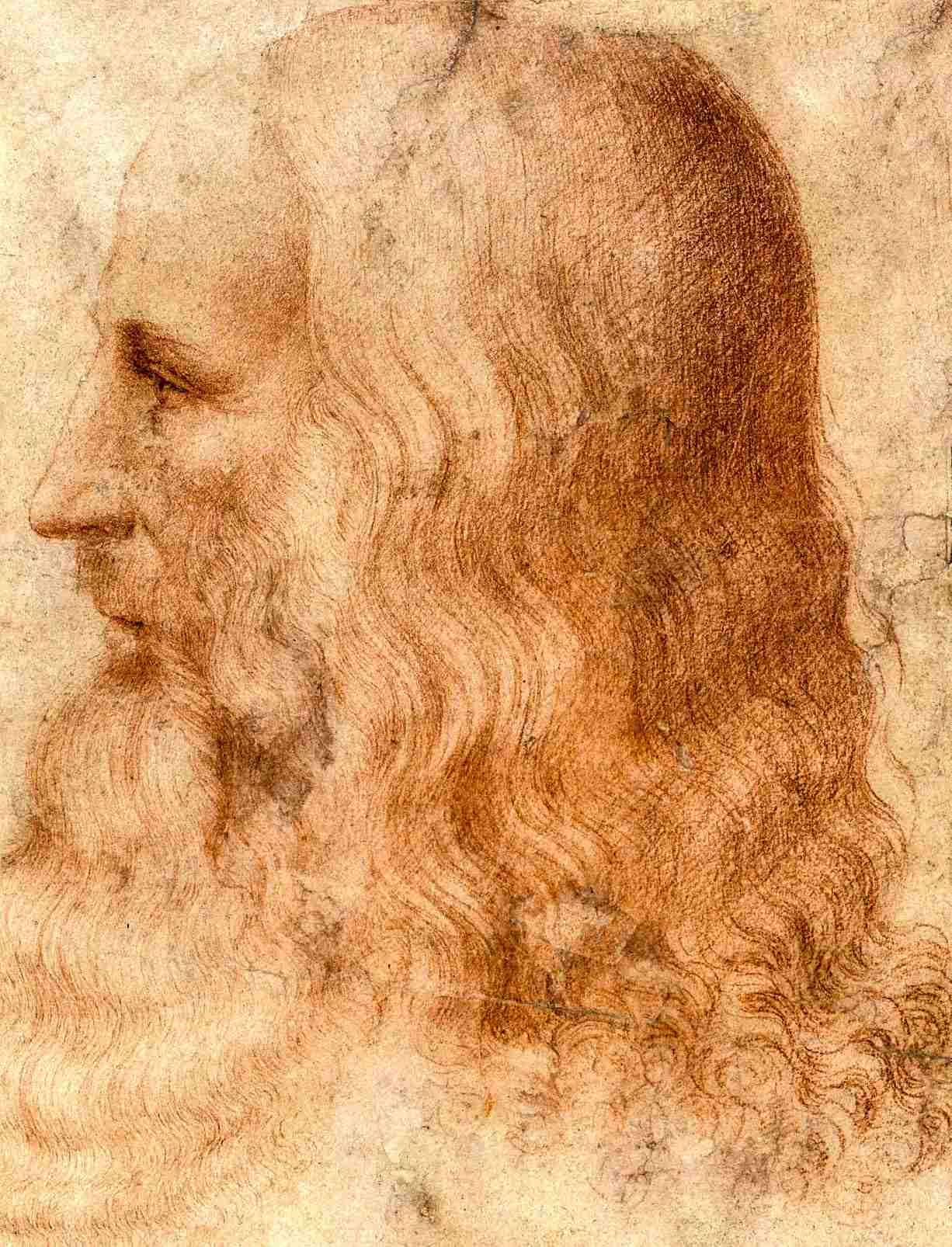Around 1487, Renaissance polymath Leonardo da Vinci came up with a notion for a war tank that we call today the da Vinci Tank or Leonardo’s fighting vehicle. There is no evidence to suggest that Leonardo ever produced a prototype of his combat tank, which was severely constrained in its traveling capacity due to its innovative but inefficient traction mechanism that relied on human power. Leonardo called his design officially the “armored car,” and eight people operated it.
History of the da Vinci Tank
Proposed in a Letter
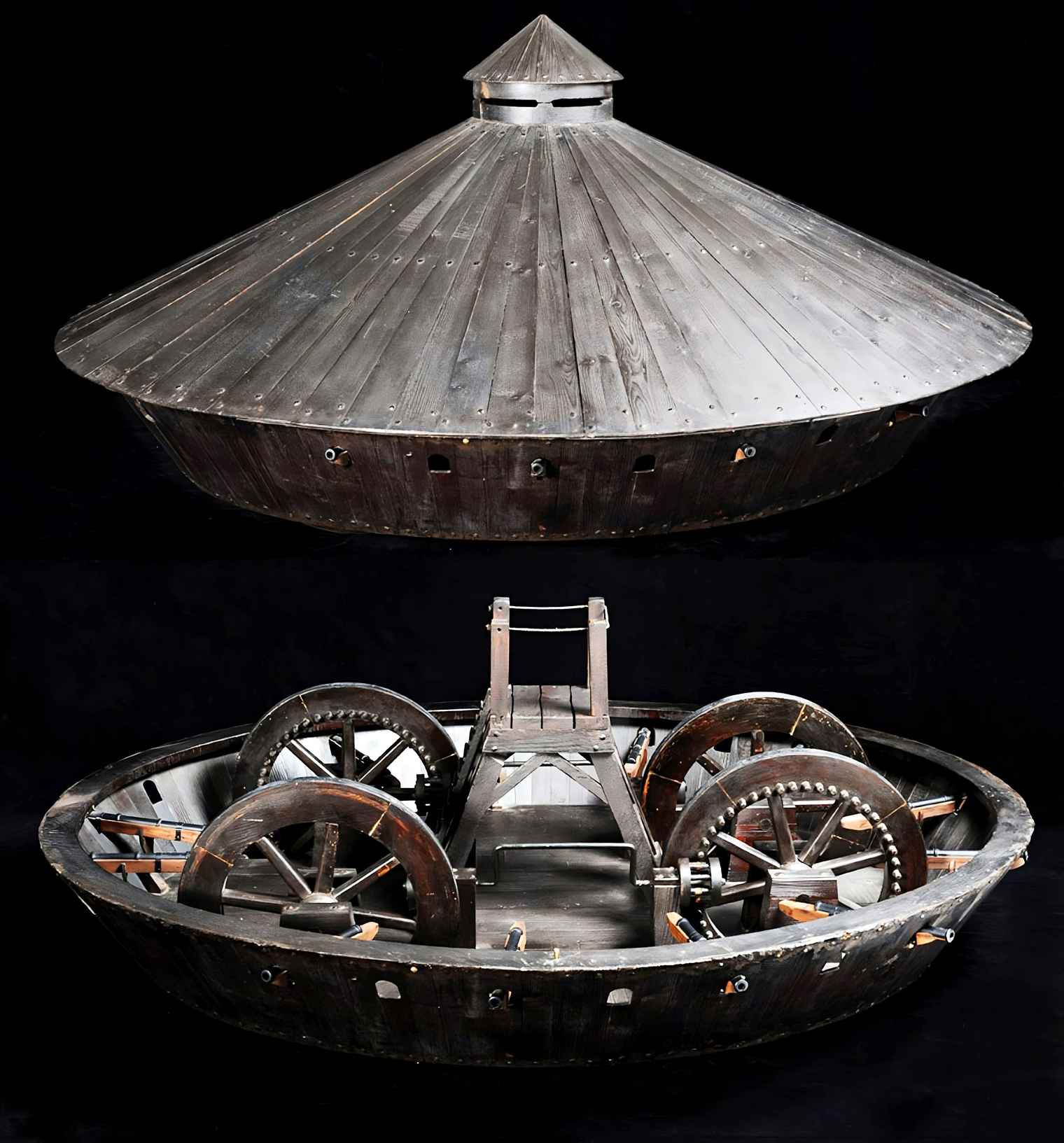
The da Vinci Tank was first mentioned in a letter from Leonardo da Vinci to Ludovico Sforza, then Duke of Milan, written in 1482 or 1483. It is included in the Codex Atlanticus today, a collection of drawings and writings by the great inventor. The same codex also features the 33-Barreled Organ, da Vinci’s rocket artillery; similar to the Korean Hwacha, one of the first artillery guns in history.
In his letter, da Vinci proposed a number of military weapons, such as a tank with mounted cannons, and offered his services as a military engineer to the ruler of Milan:
“I will make secure and unassailable covered carriages which, entering among the enemy with his artillery, no multitude of men at arms however great could break them, and many infantrymen can follow behind these unharmed and unimpeded.”
Leonardo da Vinci’s “Letter to Ludovico Sforza” is found in the Codex Atlanticus on page 1082.

The above artwork was created during the artist’s first stay in Milan at the ducal court of Duke Ludovico Sforza in the 1480s. On the right, he depicts its use with the blazing guns.
In the following years, circa 1485–1487, Leonardo completed the sketching of the ancestor of the modern tank, which is now part of the Codex Arundel, another collection of notes written by the polymath between 1480 and 1518.
How Did Leonardo Describe His Armored Car?

Like practically all of Leonardo’s inventions (see Leonardo da Vinci’s Self-Propelled Cart), the artist was once again eager to put his inventive talents to a more militaristic use. Leonardo reveals the mechanism of his armored car below the left side of his sketch, with the tank’s roof off:
“The way the car is arranged within — eight men operate it, and the same men turn the car and pursue the enemy.”
He also adds a note,
“This is good for breaking the ranks, but you will want to follow it up.”
However, because of the technological constraints of this speculative design, no prototype of the da Vinci Tank has ever been documented.
A Modern Prototype
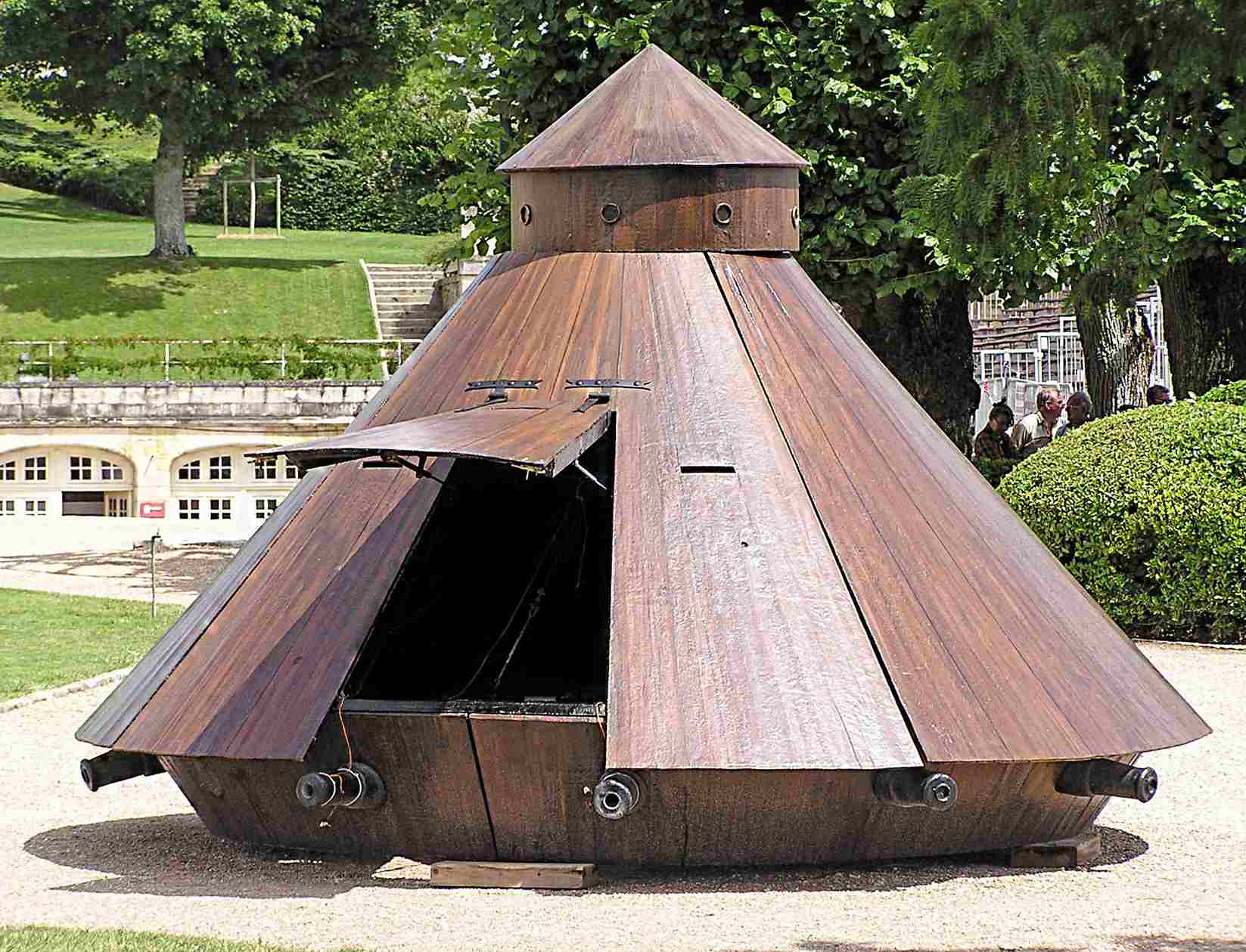
The engineering team YTEngineer followed Leonardo’s blueprints to the letter, recreating the Italian scholar’s primary combat tank around 2010. To get their scale model to function, the YTEngineer team corrected the flaws in Leonardo’s traction system design that had previously stopped it from being put into use.
If more field testing had been available for Leonardo at the time, he would have probably fixed the rest of the flaws in this tank design.
The vehicle’s scale replicas have lately been shown in museums all over the globe, including those in Milan, Vinci, Rome, Macau, and Amman.
Design of the da Vinci Tank
A Tortoise Shell
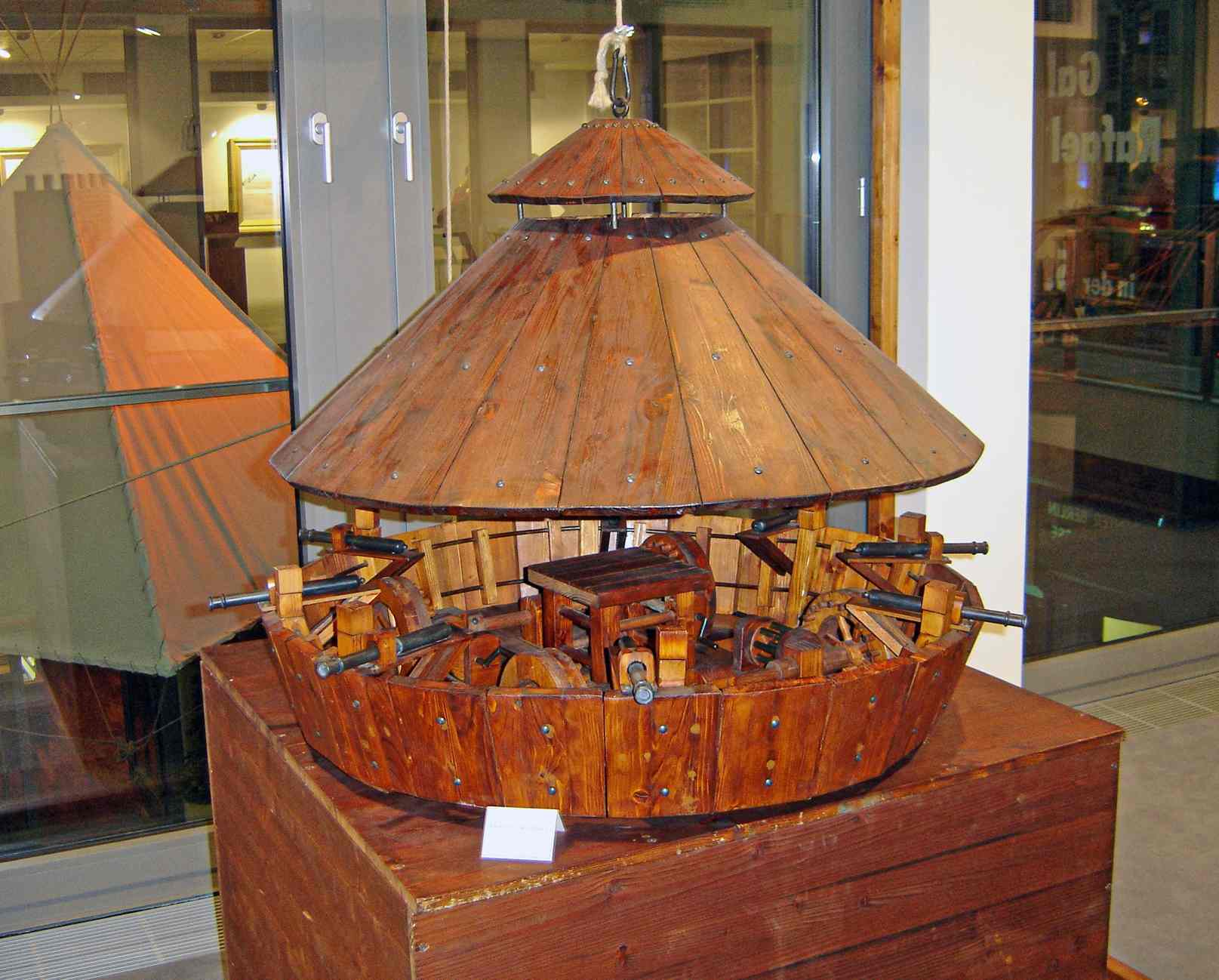
Da Vinci took inspiration from a tortoise shell while designing the conical shape of his battle tank and mounted his fighting vehicle with potentially 16 to 32 cannons around its perimeter. The exterior of the da Vinci Tank is made of wood, and it is shielded by metal plates.
Technically, the da Vinci tank had a conical wooden body with metal plates layered on top to simulate the natural armor of a turtle shell, specifically Hermann’s tortoise.
The purpose of this ‘armored car’ was to bring chaos and carnage among the enemy lines. Ladders had to be built within the tank because of how tall it needed to be.
Better Than Modern Tanks

When compared to the vertical armor of early contemporary main battle tanks during World War I, this novel oblique slanted armor system proved to be much more successful in deflecting shells, and it was designed 400 years before them.
Multiple light gun loopholes (or arrowslits) encircled the bottom half of the body, allowing the weapons in the da Vinci Tank to be fired in any direction.
For its part, an observation turret also topped the tank’s upper half, allowing for better visibility and airflow within the vehicle as well as easier artillery shooting.
Still, the vehicle’s weight and lack of maneuverability on the battlefield would have limited its usefulness without further revisions. Nonetheless, it would have been difficult to implement and complete the project in the 15th century.
The Operation of the Tank

Leonardo’s fighting vehicle had four wheels attached, and they relied on two cranks to power a gear system for propulsion. This mechanism required anywhere from four to eight people to operate the tank.
Therefore, the eight crew members could activate the propulsion mechanism just from within the vehicle itself, safe from enemy projectiles. This was something that would not have been possible with a mechanism dependent on draft animals.
Some scholars theorize that Leonardo da Vinci strategically preferred the use of human muscular strength to the detriment of animal strength for this specific reason.
According to others, da Vinci contemplated employing horses as the driving force, but he ultimately decided against it because he feared the horses would panic if they were contained in a small area.
Flaws of the da Vinci Tank
Da Vinci’s propulsion mechanism might have actually been useful if not for the fact that he put the gears in the wrong sequence. The arrangement of the gears in Leonardo’s drawing renders the vehicle useless since the wheels on each side of the armored car would turn towards each other.
This technological flaw may have been intentional on the part of the creator to prevent the theft or reckless use of his tank design, according to some accounts.
This makes sense since Leonardo always prioritized secrecy, even when it came to noting his ideas on paper by writing in mirror images.
However, the da Vinci Tank’s design flaws negated most of its practical use. For instance, the crew had to make significant physical efforts to operate its traction system. The thinness of the wheels was another major flaw of this Renaissance combat tank, making it less effective on uneven or wet ground.
The da Vinci Tank in the Cultural Realm

- Assassin’s Creed: Brotherhood, released in 2010, features the da Vinci Tank. Cesare Borgia, the game’s primary antagonist, steals Leonardo’s ideas and uses them to build a prototype of his war machine so that the papal soldiers of the Borgia family might conquer Italy in the future. Because of this, da Vinci gives the mission of destroying the blueprints and prototype of his tank to the fictitious protagonist Ezio Auditore.
- Episode 5 of the 1996 animated TV series “The Magical Adventures of Quasimodo” (A Trip to Italy) has the main character and a few of his friends trying to stop Frollo from stealing the young da Vinci’s tank. But as soon as Frollo gets behind the wheel, the wagon starts destroying itself piece by piece, rendering it useless.
- In 2009, the tank was reconstructed to scale for the Discovery Channel show Doing DaVinci. Moving the tank on sandy ground with the crank drive was challenging, but doable.
- It was attempted in the 2003 BBC program “Leonardo: The Man Who Wanted to Know Everything” to make a tank according to Leonardo’s drawings, but an error was found in the drawings (pairs of wheels were spinning in different directions), so the error was fixed, and the tank was put through its paces.
References
- Leonardo Da Vinci’s letter to Ludovico Sforza on his Da Vinci Tank: Festungsbau: Geometrie, Technologie, Sublimierung – By Bettina Marten – Google Books
- The Da Vinci Tank drawings by Leonardo da Vinci – British Museum
- Leonardo da Vinci Interactive Museum in Florence.
- YTEngineer – YouTube



